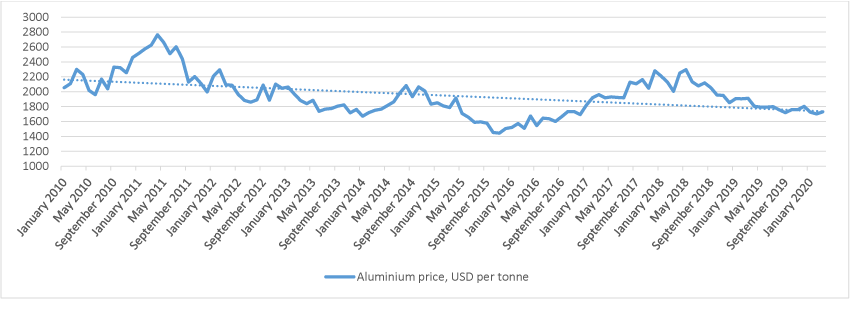Aluminum
Aluminium is a silver-white metal, the most widespread metal on Earth, making up more than 8% of the Earth's core mass. Despite that fact the pure aluminum was discovered relatively recently, since in nature it usually binds with other elements. The first production of aluminium occurred as late as 1824.
Physical characteristics:

Aluminum has a wide range of applications. In terms of industrial usage, it may be compared only with iron. Aluminum plays a significant role in the world economy, mainly due to its active use in industry. Aluminum production is closely related to the development of the most high-tech manufacturing industries (automobile industry, aviation, aerospace projects, electronics, etc.).
Application of aluminium:
- Machinery – automobile industry;
- Transport (planes, buses, ships);
- Construction (aluminium construction details, windows, furniture, electronic devises);
- Electrical engineering;
- Consumer goods;
- Aluminium sulphates is used to clean water, for cooking, in medicine, in cosmetology, in the chemical industry and in other sectors.

Transportation and construction sectors constitute more than half (52%) of total aluminum consumption, whereas 48% comprises foil and packaging, electrical engineering, machinery, consumer goods, etc
Aluminium production
According to the European Aluminium and International Aluminium Institute (IAI) the leading producer of aluminium is China – more than 50% of global production (see the chart)

* in thousand metric tonnes of aluminium
Aluminium quotation
Aluminium is quite volatile that may be of interest for investors especially on the Derivatives Market. The price subject to numerous factors including overall economic situation, mining companies policy etc. See the chart below.
